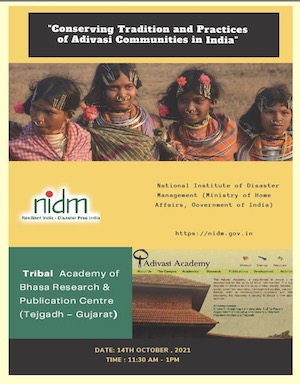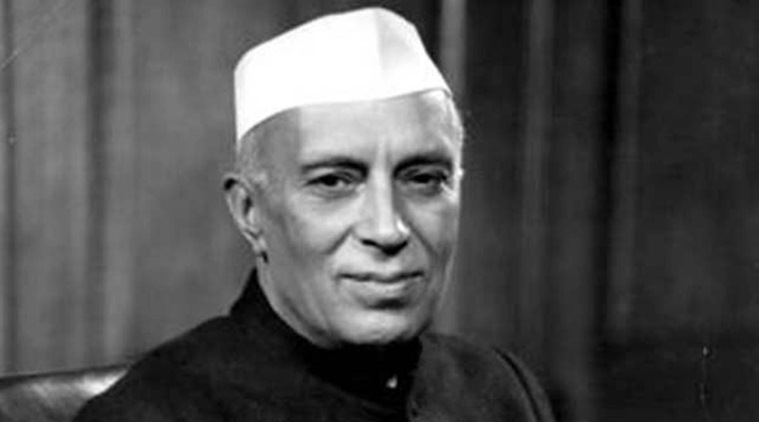
Key Takeaways | Full report >>
Bhasha | Read or download titles for free (eBooks & Magazine) >>
Key Takeaways
- Culture and tradition play a big role in the development of any community. This is especially true of marginalized rural communities such as India’s Adivasi tribes.
- The farming practices of tribal people are truly sustainable in many ways. Their subsistence life style, local diet habits and dependence on rainfed irrigation have influenced them to cultivate and conserve the traditional cultivars or land races. The tribal communities practice a unique method of farming, known as the mixed cropping system in limited areas depending on monsoon rain.
- Cultural diversity in terms of ethnic groups gives us knowledge on the value of plant resources. The knowledge of ethnic groups on the cultural, spiritual, social and economic values of plants can be of immense use to the entire humankind. It can provide many valuable genes for developing the crop plants that are extensively cultivated today. It can equip the humankind with several new chemicals for combating many human ailments.
- Tribal areas located deep inside the forest areas were selected to ensure less contact with the so called civilized society. Reconnaissance surveys were done to select tribal communities and hamlets in order to work with people who still practice forest depended lifestyles, living in rich forests.
- Medicinal properties of plants have been recognized and practiced by tribal communities as a tradition for thousands of years. Knowledge on some common medicinal plants of their locality is available with all the members of the community. However, the elderly members possess a great deal of knowledge of medicinal plants as well as on medicines for curing certain life threatening diseases. Tribal people use plants solely or in combination.
- Community co-operation and participation prevailing particularly in tribal community has helped them in conserving the traditional land races. The practice is such that every family in the community will contribute a stipulated amount of their harvest to the community granary maintained and managed by the chieftain of the hamlet. During important occasions like marriages, social events and festivals and also as and when someone needs for regular consumption, grains can be borrowed on loan and paid back. This system has enabled the tribals to conserve the seed material even if the produce in a particular season is less or if the grains stored for domestic consumption are exhausted.
- Policy decisions, which might affect the ecological balance of biodiversity, should be taken through prior consultation of tribal people inhabiting the areas, who may help us with practical suggestions. Otherwise, ultimately the ethnic people are the worst affected in any environmental crisis, as they exist at the bottom line of social strata. Loss of biodiversity results in the loss of cultural diversity, which is the cradle of knowledge on the values of plants.
Source: “Key Takeaways” in “Conserving Tradition and Practices of Adivasi Communities in India”, National Institute of Disaster Management (NIDM.gov.in, Ministry of Home Affairs, Government of India) and Tribal Academy of Bhasa Research & Publication Centre, 14 October 2021
URL: https://nidm.gov.in/pdf/trgReports/2021/October/Report_14October2021sg.pdf
Date Visited: 4 January 2023
The world has enough for everyone’s need but not for anyone’s greed.
Mahatma Gandhi >>
Source: Acceptance speech by Medha Patkar and Baba Amte (Narmada Bachao Andolan), Laureates of the 1991 Right Livelihood Award (“a courage-powered community for social change committed to peace, justice and sustainability for all)
URL: https://rightlivelihood.org/speech/acceptance-speech-medha-patkar-and-baba-amte-narmada-bachao-andolan/
Date visited: 11 March 2022

Library copies: Worldcat.org >>
Gandhian social movement >>
How tribal communities have protected India’s forests and preserved biodiversity all over the world
“Tribal communities have proven that they are the best guardians of the forest and die-hard conservationists”: Illegal mining destroys the life and culture of the conservators of forests >>
“Even though they are responsible for protecting the largest part of the global forest heritage […] a third of indigenous and community lands in 64 countries are under threat due to the lack of land tenure rights.” – Pressenza Rio de Janerio in “Indigenous people are heading to CoP26: ‘There is no solution to the climate crisis, without us’” (Down To Earth, 1 November 2021) >>
“The British established mode of forest governance imposed restrictions on local forest-dwelling communities. In 1860, the Company withdrew all access rights for using the forests (food, fuel, medicine and selling forest products) since the forests and forest-dwelling communities provided refuge to the rebels during the Sepoy Mutiny.” – Bharat Rural Livelihoods Foundation >>
“Tribal population was spread all over India and most of them occupied wild tracts, hilly and forested areas, away from more civilized centers. In 1880 their population was estimated at about seventy million. They had existed for centuries with their own social traditions and beliefs and subsisted on natural resources. They had preserved their near isolation and way of life until the British administration and policies made inroads into their territories.” – Subha Johari in Tribal Dissatisfaction Under Colonial Economy of 19th Century >>

“Two main streams within Indian anthropology influenced the literary and visual representations of tribes by mainstream writers, artists and film-makers.” – Dr. Ivy Hansdak clarifies how they are associated with “assimilationist” and “isolationist” positions or policies >>
In Marginalised but not Defeated, Tarun Kanti Bose (a seasoned public interest journalist) “documents the hard and difficult struggle to implement the Forest Rights Act, how the oppressed adivasis have united into forest unions, how they are now entering into new thresholds of protracted struggles and victories in a non-violent manner.” | Learn more: https://countercurrents.org/2023/05/book-review-marginalised-but-not-defeated >>
“Tribal men and women mix freely, but with respect for each other [but] caste Hindu society in India is so convinced of its own superiority that it never stops to consider the nature of social organisation among tribal people. In fact it is one of the signs of the ‘educated’ barbarian of today that he cannot appreciate the qualities of people in any way different from himself – in looks or clothes, customs or rituals.” – Guest Column in India Today >>
Learn more about colonial policies, the Forest Rights Act, its importance for ecology, biodiversity, ethnobotany and nutrition, and about the usage of Adivasi (Adibasi) communities in different states of India: in legal and historical records, in textbooks, scholarly papers and the media >>

Photo © Indian Express
